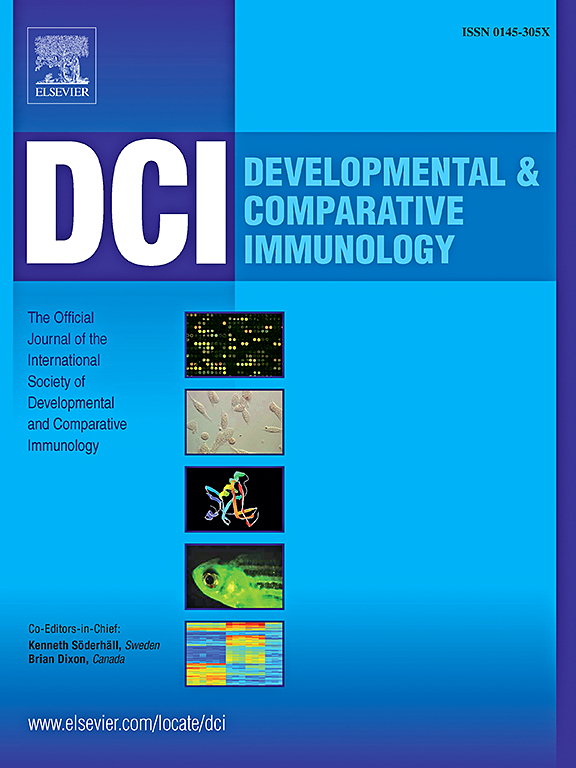虾VPAHPND的发病机制及其介导的免疫应答
IF 2.4
3区 农林科学
Q1 FISHERIES
引用次数: 0
摘要
对虾养殖对全球海产品生产至关重要,但受到急性肝胰腺坏死病(AHPND)等疾病的严重威胁。了解ahpnd介导的虾免疫需要从各种研究背景中综合方法。本文介绍的工作包括:1)VPAHPND、PirAvp、PirBvp和PirABvp毒素的致病性;2)对虾主要免疫器官的免疫反应,mirna在调节免疫相关基因对抗VPAHPND、热休克蛋白和小gtpase在对抗VPAHPND中的作用;3)对虾对PirAvp、PirBvp和PirABvp毒素反应的最新知识;4)不同弧菌的毒力。5)不同甲壳类动物对副溶血性弧菌诱导AHPND的反应差异。尽管取得了进展,但在了解AHPND病原体的分子途径和免疫逃避策略方面仍然存在差距。我们概述了AHPND诱导免疫反应的功能报告,包括基础研究和应用研究。本文章由计算机程序翻译,如有差异,请以英文原文为准。
VPAHPND pathogenesis and its mediated immune response in shrimp
Shrimp aquaculture is vital for global seafood production but is severely threatened by diseases like Acute Hepatopancreatic Necrosis Disease (AHPND). Understanding AHPND-mediated immunity in shrimp requires an integrated approach drawing from various research contexts.This work described here include 1) the pathogenicity of VPAHPND, PirAvp, PirBvp and PirABvp toxins, 2) the immune responses of shrimp's main immune organs, the role of miRNAs in regulating immune-related genes against VPAHPND, heat shock proteins and small GTPases in combating VPAHPND, 3) current knowledge on shrimp response toward PirAvp, PirBvp, and PirABvp Toxins, 4) knowledge of the virulence of different Vibrio spps., 5) the differential responses of various crustacean species to V. parahaemolyticus induced AHPND. Despite advances, gaps remain in understanding the molecular pathways and immune evasion strategies of AHPND pathogens. We provide an overview of functional reports on AHPND induced immune response benefits fundamental and applied studies.
求助全文
通过发布文献求助,成功后即可免费获取论文全文。
去求助
来源期刊
CiteScore
6.20
自引率
6.90%
发文量
206
审稿时长
49 days
期刊介绍:
Developmental and Comparative Immunology (DCI) is an international journal that publishes articles describing original research in all areas of immunology, including comparative aspects of immunity and the evolution and development of the immune system. Manuscripts describing studies of immune systems in both vertebrates and invertebrates are welcome. All levels of immunological investigations are appropriate: organismal, cellular, biochemical and molecular genetics, extending to such fields as aging of the immune system, interaction between the immune and neuroendocrine system and intestinal immunity.

 求助内容:
求助内容: 应助结果提醒方式:
应助结果提醒方式:


